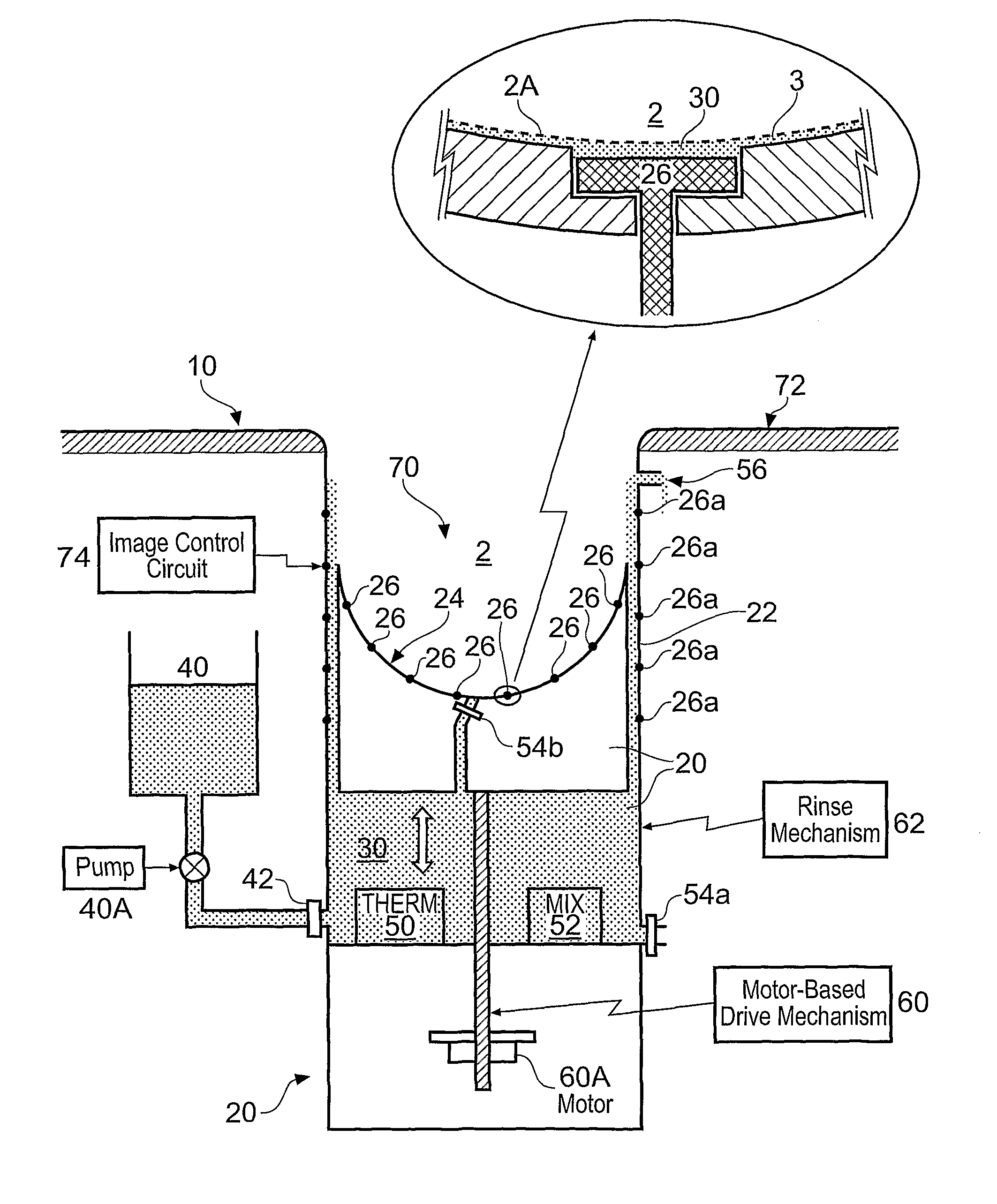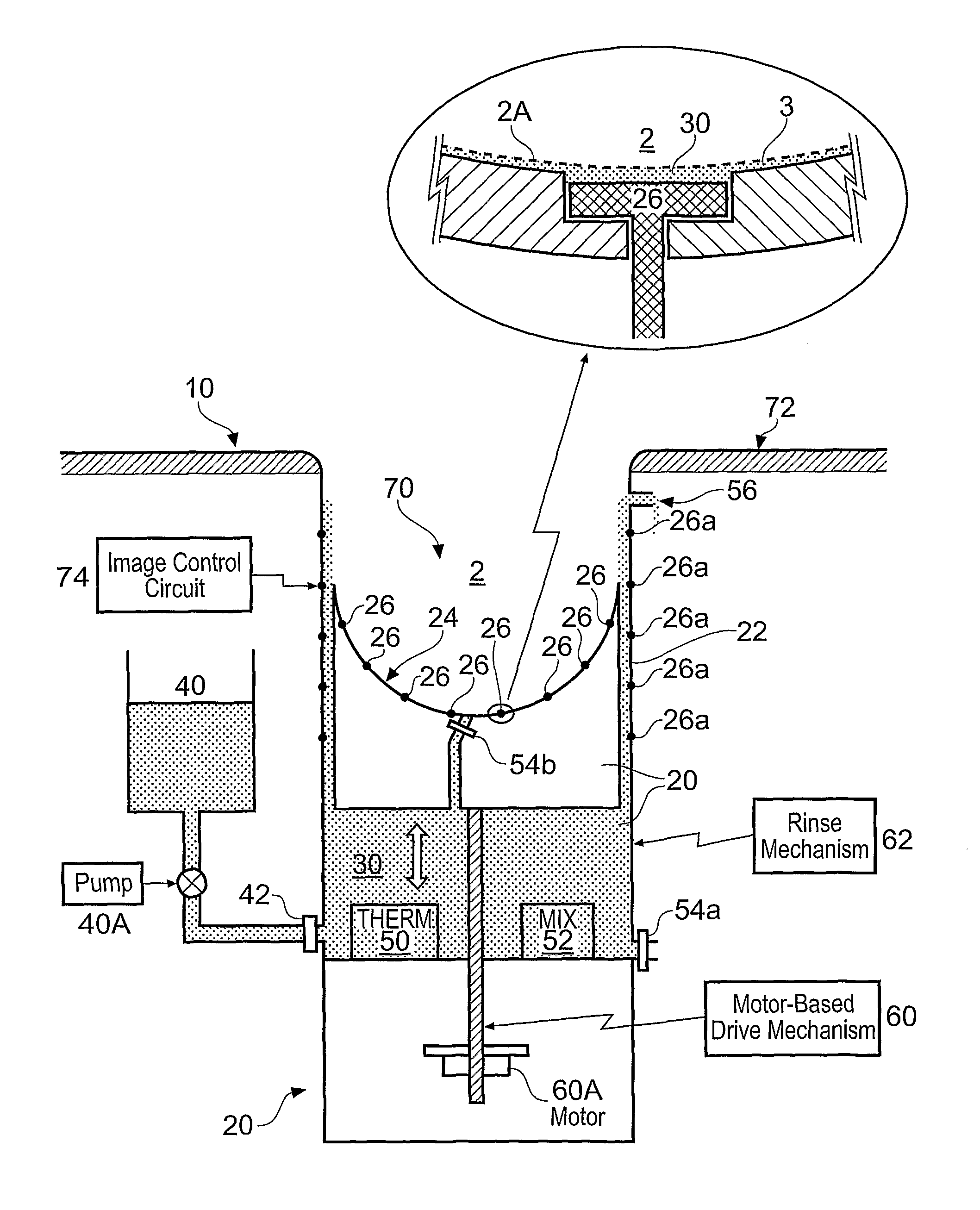Apparatus and method for non-contact electrical impedance imaging
a non-contact, electrical impedance imaging technology, applied in the field of apparatus and method for electrical impedance imaging, can solve the problems of unrepeatable image production, unexpected and unknown electrical impedances, preventing the accurate detection and monitoring of the development of, for example, non-healthy tissue, etc., to achieve high repeatability of measurements, prevent fluid impedance variation introducing errors, and improve image resolution
- Summary
- Abstract
- Description
- Claims
- Application Information
AI Technical Summary
Benefits of technology
Problems solved by technology
Method used
Image
Examples
Embodiment Construction
[0019]FIG. 1 illustrates an apparatus 10 for electrical impedance imaging of an object 2. The apparatus 10 comprises: a housing 20 having a cavity 70 for containing a fluid 30 in which an object 2 to be imaged is at least partially immersed; and a plurality of electrodes 26, 26A positioned at the periphery of the cavity 70. In use, each of the electrodes 26, 26A does not contact the object 2 to be imaged but is electrically coupled to the object 2 via the fluid 30 in which the object 2 is immersed.
[0020]The apparatus 10 described in the following paragraphs has been adapted for use in electrical impedance imaging of a human breast, particularly the female breast.
[0021]The female lies on a table 72 and places her breast into a cavity 70 that is already filled with fluid 30 or is subsequently filled with fluid 30. The cavity 70 has a variable volume and is sized to match the size of the breast 2 to be imaged.
[0022]The cavity 70 is defined by a housing 20 which comprises a cylindrical ...
PUM
 Login to View More
Login to View More Abstract
Description
Claims
Application Information
 Login to View More
Login to View More - R&D
- Intellectual Property
- Life Sciences
- Materials
- Tech Scout
- Unparalleled Data Quality
- Higher Quality Content
- 60% Fewer Hallucinations
Browse by: Latest US Patents, China's latest patents, Technical Efficacy Thesaurus, Application Domain, Technology Topic, Popular Technical Reports.
© 2025 PatSnap. All rights reserved.Legal|Privacy policy|Modern Slavery Act Transparency Statement|Sitemap|About US| Contact US: help@patsnap.com


